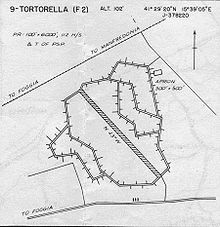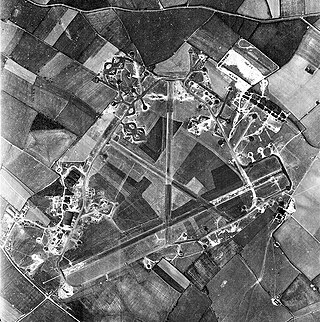
Royal Air Force Chelveston or more simply RAF Chelveston is a former Royal Air Force station located on the south side of the B645, 5 miles (8.0 km) east of Wellingborough, near the village of Chelveston in Northamptonshire, England. During the Second World War the airfield was occupied by both the Royal Air Force and the United States Army Air Forces. It was given the USAAF designation Station 105.

Royal Air Force Bassingbourn or more simply RAF Bassingbourn is a former Royal Air Force station located in Cambridgeshire approximately 3 mi (5 km) north of Royston, Hertfordshire and 11 mi (18 km) south west of Cambridge, Cambridgeshire, England.

Royal Air Force Kimbolton or more simply RAF Kimbolton is a former Royal Air Force station located 8 miles (13 km) west of Huntingdon, Cambridgeshire, England.
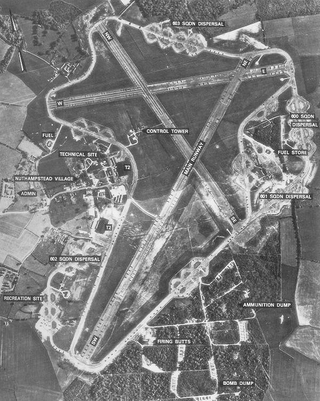
Royal Air Force Nuthampstead or more simply RAF Nuthampstead is a former Royal Air Force station in England. The airfield is located mostly in Hertfordshire between the villages of Nuthampstead and Anstey and the hamlet of Morrice Green in Hertfordshire and Langley, Lower Green and Clavering Park Wood in Essex. The eastern part of the airfield including part of the East-West Runway, the Fuel Store, the dispersal areas of 600 and 601 Squadrons and the northeastern perimeter track were all in Essex. RAF Nuthampstead is located four miles to the east of the A10 Hertford to Royston road.

Royal Air Force Halesworth or more simply RAF Halesworth is a former Royal Air Force station located 2 miles (3 km) north east of the town of Halesworth, Suffolk, England and 7 miles (11 km) west of Southwold.
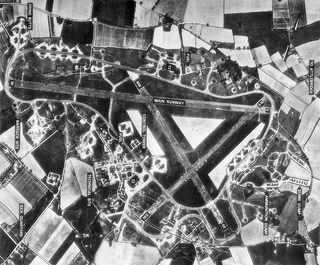
Royal Air Force Attlebridge, or simply RAF Attlebridge, is a former Royal Air Force station located near Attlebridge and 8 miles (13 km) northwest of Norwich, Norfolk, England.

Royal Air Force Thorpe Abbotts or more simply RAF Thorpe Abbotts is a former Royal Air Force station located 4 miles (6.4 km) east of Diss, Norfolk, in eastern England.
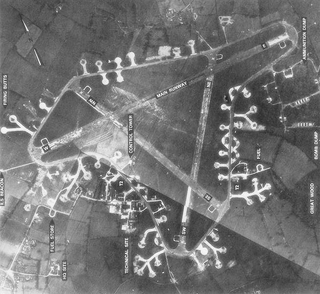
Royal Air Force Framlingham or more simply RAF Framlingham is a former Royal Air Force station located 3 miles (4.8 km) southeast of Framlingham, Suffolk, England.

Royal Air Force Rattlesden or more simply RAF Rattlesden is a former Royal Air Force station located 9 miles (14 km) south east of Bury St Edmunds, Suffolk, England.

Royal Air Force Sudbury or more simply RAF Sudbury is a former Royal Air Force station located 2 miles (3.2 km) north-east of Sudbury, Suffolk, England.

Chateaudun-du-Rhumel Airfield is an abandoned military airfield in Algeria, located about 6 km north-northwest of Chelghoum el Aid, in Mila province, about 47 km southwest of Constantine.
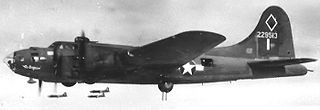
Navarin Airfield is a World War II military airfield in Algeria, located approximately 10 km from El Eulma in Sétif Province. It was used by the United States Army Air Force Twelfth Air Force during the North African Campaign for heavy B-17 Flying Fortress bombers against the German Afrika Korps. B-17s known as the 'Diamondbacks' would fly from here to Rome in Operation Husky in July 1943. Known units assigned were:
Ain M'lila Airfield is an abandoned World War II military airfield in Algeria, located approximately 17 km north-northwest of Aïn Kercha in Oum el Bouaghi province, about 50 km south-southeast of Constantine. It was built by the Army Corps of Engineers on a flat, dry lakebed at an altitude of 2580 feet, designed for heavy bomber use by the United States Army Air Force Twelfth Air Force during the North African Campaign with concrete runways, hardstands and taxiways. Billeting and support facilities consisted of tents. Due to its high altitude, the days were hot and the nights cold. Known units which operated from Ain M'lila were:

The Foggia Airfield Complex was a series of World War II military airfields located within a 40 km (25 mi) radius of Foggia, in the Province of Foggia, Italy. The airfields were used by the United States Army Air Forces' Fifteenth Air Force as part of the strategic bombardment campaign against Nazi Germany in 1944 and 1945, as well as the Twelfth Air Force, the British Royal Air Force and the South African Air Force during the Italian Campaign (1943–1945).
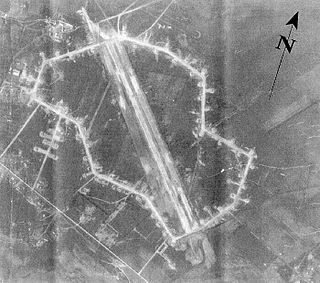
Lucera Airfield is an abandoned World War II military airfield in Italy. It was located 7.9 kilometers east of Lucera, in the Province of Foggia. The airfield was abandoned and dismantled after the end of the war in 1945.
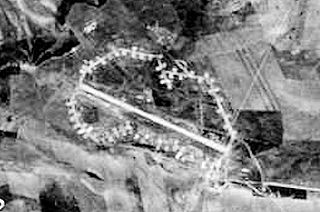
Sterparone Airfield is an abandoned World War II military airfield in Italy. It was located 11.1 kilometers south-southeast of San Severo, in the Province of Foggia. The airfield was abandoned and dismantled after the end of the war in 1945.

The 347th Bombardment Squadron is an inactive United States Air Force unit. It was last assigned to the 4047th Strategic Wing, and was inactivated at McCoy Air Force Base, Florida on 1 April 1963.

United States Army Air Forces formations and units in the Mediterranean Theater of Operations (MTO) were the second-largest user of the Boeing B-17 Flying Fortress during World War II. There were a total of six combat groups (twenty-four squadrons) equipped with the bomber assigned to the Theater.

Celone/San Nicola d'Arpi Airfield is an abandoned World War II military airfield in Italy. It was located 10 kilometers north of Foggia, in the Province of Foggia. The airfield was abandoned and dismantled after the end of the war in 1945.

Amendola Air Base is a military airfield of the Italian Air Force. It is the home of 32nd Wing.



